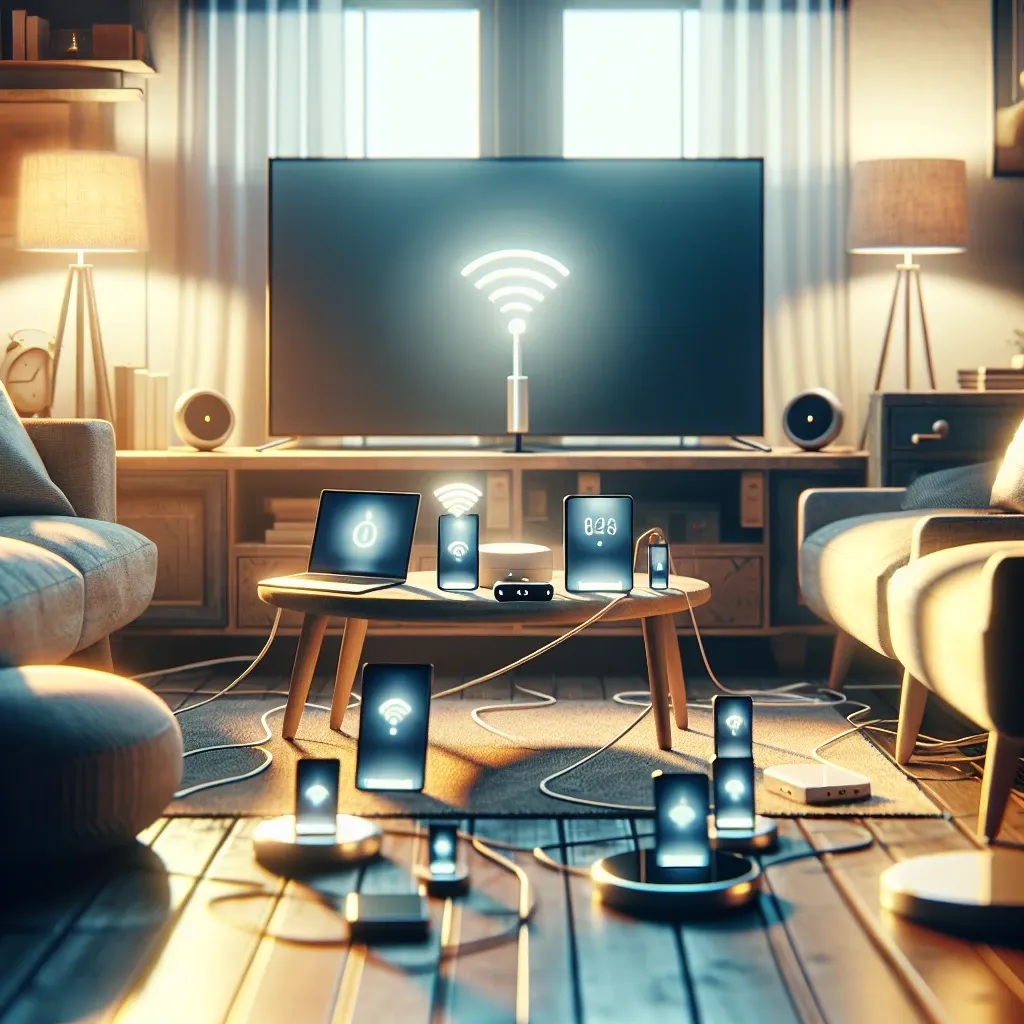Introduction
In an era where convenience and technology have become inseparable, the need for efficient power solutions has never been more pressing. Traditional charging methods, characterized by tangled cables and limited mobility, are quickly becoming outdated. Enter wireless power transmission, a groundbreaking technology that promises to eliminate charging cables for household devices, transforming our everyday experiences.
The Evolution of Power Transmission
Wireless power transmission isn’t a novel concept; its roots can be traced back to the late 19th century with Nikola Tesla’s ambitious experiments. Tesla envisioned a world where electricity could be transmitted through the air without wires. Over the years, this vision has evolved, leading to the modern wireless charging solutions we see today.
How Wireless Power Transmission Works
At its core, wireless power transmission relies on electromagnetic fields to transfer energy from a power source to a device. There are several methods to achieve this:
- Inductive Coupling: Commonly used in wireless chargers for smartphones, this method utilizes coils to create a magnetic field, transferring energy over short distances.
- Resonant Inductive Coupling: Expanding on inductive coupling, this technique allows for energy transfer over greater distances and with higher efficiency.
- Radio Frequency (RF) Transmission: This method sends energy via radio waves, making it suitable for low-power devices and sensors.
Applications in Household Devices
As wireless power technology continues to advance, its applications in household devices are becoming increasingly diverse. Here are some areas where it is making a significant impact:
- Smartphones: Gone are the days of hunting for charging cables. With wireless charging pads, simply placing your phone on a surface will initiate charging.
- Smart Home Devices: From smart speakers to home security systems, many devices are adopting wireless charging capabilities, enhancing user convenience.
- Kitchen Appliances: Imagine your kitchen gadgets charging seamlessly without cables—wireless power technology is set to enhance kitchen efficiency.
Benefits of Wireless Power Transmission
The shift towards wireless power transmission presents numerous benefits:
- Convenience: Eliminating cables makes charging devices simpler, reducing clutter and enhancing the user experience.
- Safety: With fewer exposed wires, the risk of electrical hazards decreases, especially in homes with children or pets.
- Longevity of Devices: Wireless charging reduces wear and tear on charging ports, potentially extending the lifespan of devices.
Challenges and Limitations
While the advantages are compelling, wireless power transmission also faces challenges:
- Efficiency: Currently, wireless charging can be less efficient than traditional methods, leading to longer charging times.
- Cost: Implementing wireless charging technology can be expensive, particularly for manufacturers.
- Heat Generation: Wireless charging can generate heat, which may impact device performance and battery life.
Future Predictions
Looking ahead, experts predict that wireless power transmission will continue to evolve, becoming more efficient and widespread. Innovations such as dynamic charging—where devices charge while in motion—could radically change how we think about energy consumption. Additionally, advancements in battery technology may parallel developments in wireless charging, leading to even more optimized solutions.
Cultural Relevance
The cultural implications of a cable-free world cannot be understated. In a society that values convenience and speed, the transition to wireless power could redefine our interactions with technology. Imagine homes where devices charge autonomously, allowing users to focus on more important tasks. This shift could enhance productivity while minimizing distractions caused by tangled wires.
Real-World Examples
Several companies are already making waves in the wireless power transmission space:
- Ossia: Their Cota technology allows devices to charge wirelessly over the air, even while moving.
- WiTricity: Focusing on electric vehicles, WiTricity’s solutions demonstrate the potential for wireless charging infrastructure in public spaces.
- Apple & Samsung: Both tech giants have integrated wireless charging into their latest smartphone models, paving the way for wider adoption.
Step-by-Step Guide to Wireless Charging
Transitioning to a wireless charging lifestyle is simple:
- Invest in a Wireless Charger: Choose a reliable brand that supports the devices you own.
- Check Device Compatibility: Ensure your devices are compatible with wireless charging.
- Place Your Device: Simply place your device on the charging pad and watch it charge effortlessly.
- Maintain the Charger: Keep the charging surface clean and avoid overlapping with other devices to ensure optimal performance.
Conclusion
Wireless power transmission is more than just a technological advancement; it is a glimpse into the future of how we will interact with energy and devices. By eliminating charging cables, this innovative approach enhances convenience, safety, and longevity of household devices. As we continue to embrace this technology, our homes will transform into smarter, more efficient environments, paving the way for a cable-free future.
Join the Future Today
Embrace the wireless power revolution—transform your home today and experience the ease of a cable-free lifestyle. The future is bright, and it is wireless.
